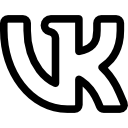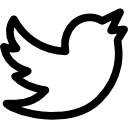terior fontanel closes after birth by months. A. 2 B. 8 C. 12 * D. 18 Correct Answer: D Explanation/Rationale: ANS: D The larger of the two fontanels, the anterior fontanel, closes by 18 months after birth. 2. Question Name: 0002 Type: MC Objective: CH 13: Labor and Birth ProcessesLabor and Birth Pr ItemBank: Perry Maternal Child Nursing Care 5th edition When assessing a woman in labor, the nurse is aware that the relationship of the fetal body parts to one another is called fetal: A. Lie. B. Presentation. * C. Attitude. D. Position. Correct Answer: C Explanation/Rationale: ANS: C Attitude is the relation of the fetal body parts to one another. Lie is the relation of the long axis (spine) of the fetus to the long axis (spine) of the mother. Presentation refers to the part of the fetus that enters the pelvic inlet first and leads through the birth canal during labor at term. Position is the relation of the presenting part to the four quadrants of the mother’s pelvis. 3. Question Name: 0003 Type: MC Objective: CH 13: Labor and Birth ProcessesLabor and Birth Pr ItemBank: Perry Maternal Child Nursing Care 5th edition When assessing the fetus using Leopold maneuvers, the nurse feels a round, firm, movable fetal part in the fundal portion of the uterus and a long, smooth surface in the mother’s right side close to midline. What is the likely position of the fetus? A. ROA B. LSP * C. RSA D. LOA Correct Answer: C Explanation/Rationale: ANS: C The fetus is positioned anteriorly in the right side of the maternal pelvis with the sacrum as the presenting part. RSA is the correct three-letter abbreviation to indicate this fetal position. The first letter indicates the presenting part in either the right or left side of the maternal pelvis. The second letter indicates the anatomic presenting part of the fetus. The third letter stands for the location of the presenting part in relation to the anterior, posterior, or transverse portion of the maternal pelvis. Palpation of a round, firm fetal part in the fundal portion of the uterus would be the fetal head, indicating that the fetus is in a breech position with the sacrum as the presenting part in the maternal pelvis. Palpation of the fetal spine along the mother’s right side denotes the location of the presenting part in the mother’s pelvis. The ability to palpate the fetal spine indicates that the fetus is anteriorly positioned in the maternal pelvis. 4. Question Name: 0004 Type: MC Objective: CH 13: Labor and Birth ProcessesLabor and Birth Pr ItemBank: Perry Maternal Child Nursing Care 5th edition The nurse has received report regarding her patient in labor. The woman’s last vaginal examination was recorded as 3 cm, 30%, and ?2-2. The nurse’s interpretation of this assessment is that: A. The cervix is effaced 3 cm, it is dilated 30%, and the presenting part is 2 cm above the ischial spines. * B. The cervix is 3 cm dilated, it is effaced 30%, and the presenting part is 2 cm above the ischial spines. C. The cervix is effaced 3 cm, it is dilated 30%, and the presenting part is 2 cm below the ischial spines. D. The cervix is dilated 3 cm, it is effaced 30%, and the presenting part is 2 cm below the ischial spines. Correct Answer: B Explanation/Rationale: ANS: B The correct description of the vaginal examination for this woman in labor is the cervix is 3 cm dilated, it is effaced 30%, and the presenting part is 2 cm above the ischial spines. The sterile vaginal examination is recorded as centimeters of cervical dilation, percentage of cervical dilation, and the relationship of the presenting part to the ischial spines (either above or below). 5. Question Name: 0005 Type: MC Objective: CH 13: Labor and Birth ProcessesLabor and Birth Pr ItemBank: Perry Maternal Child Nursing Care 5th edition To care for a laboring woman adequately, the nurse understands that the stage of labor varies the most in length? * A. First B. Second C. Third D. Fourth Correct Answer: A Explanation/Rationale: ANS: A The first stage of labor is considered to last from the onset of regular uterine contractions to full dilation of the cervix. The first stage is much longer than the second and third stages combined. In a first-time pregnancy the first stage of labor can take up to 20 hours. The second stage of labor lasts from the time the cervix is fully dilated to the birth of the fetus. The average length is 20 minutes for a multiparous woman and 50 minutes for a nulliparous woman. The third stage of labor lasts from the birth of the fetus until the placenta is delivered. This stage may be as short as 3 minutes or as long as 1 hour. The fourth stage of labor, recovery, lasts about 2 hours after delivery of the placenta. 6. Question Name: 0006 Type: MC Objective: CH 13: Labor and Birth ProcessesLabor and Birth Pr ItemBank: Perry Maternal Child Nursing Care 5th edition The nurse would expect which maternal cardiovascular finding during labor? * A. Increased cardiac output B. Decreased pulse rate C. Decreased white blood cell (WBC) count D. Decreased blood pressure Correct Answer: A Explanation/Rationale: ANS: A During each contraction, 400 mL of blood is emptied from the uterus into the maternal vascular system. This increases cardiac output by about 51% above baseline pregnancy values at term. The heart rate increases slightly during labor. The WBC count can increase during labor. During the first stage of labor, uterine contractions cause systolic readings to increase by about 10 mm Hg. During the second stage, contractions may cause systolic pressures to increase by 30 mm Hg and diastolic readings to increase by 25 mm Hg. 7. Question Name: 0007 Type: MC Objective: CH 13: Labor and Birth ProcessesLabor and Birth Pr ItemBank: Perry Maternal Child Nursing Care 5th edition The factors that affect the process of labor and birth, known commonly as the five Ps, include all except: A. Passenger. B. Passageway. C. Powers. * D. Pressure. Correct Answer: D Explanation/Rationale: ANS: D The five Ps are passenger (fetus and placenta), passageway (birth canal), powers (contractions), position of the mother, and psychologic response. 8. Question Name: 0008 Type: MC Objective: CH 13: Labor and Birth ProcessesLabor and Birth Pr ItemBank: Perry Maternal Child Nursing Care 5th edition The slight overlapping of cranial bones or shaping of the fetal head during labor is called: A. Lightening. * B. Molding. C. Ferguson reflex. D. Valsalva maneuver. Correct Answer: B Explanation/Rationale: ANS: B Fetal head formation is called molding. Molding also permits adaptation to various diameters of the maternal pelvis. Lightening is the mother’s sensation of decreased abdominal distention, which usually occurs the week before labor. The Ferguson reflex is the contraction urge of the uterus after stimulation of the cervix. The Valsalva maneuver describes conscious pushing during the second stage of labor. 9. Question Name: 0009 Type: MC Objective: CH 13: Labor and Birth ProcessesLabor and Birth Pr ItemBank: Perry Maternal Child Nursing Care 5th edition Which presentation is described accurately in terms of both presenting part and frequency of occurrence? * A. Cephalic: occiput; at least 95% B. Breech: sacrum; 10% to 15% C. Shoulder: scapula; 10% to 15% D. Cephalic: cranial; 80% to 85% Correct Answer: A Explanation/Rationale: ANS: A In cephalic presentations (head first), the presenting part is the occiput; this occurs in 96% of births. In a breech birth, the sacrum emerges first; this occurs in about 3% of births. In shoulder presentations, the scapula emerges first; this occurs in only 1% of births. 10. Question Name: 0010 Type: MC Objective: CH 13: Labor and Birth ProcessesLabor and Birth Pr ItemBank: Perry Maternal Child Nursing Care 5th edition With regard to factors that affect how the fetus moves through the birth canal, nurses should be aware that: A. The fetal attitude describes the angle at which the fetus exits the uterus. B. Of the two primary fetal lies, the horizontal lie is that in which the long axis of the fetus is parallel to the long axis of the mother. * C. The normal attitude of the fetus is called general flexion. D. The transverse lie is preferred for vaginal birth. Correct Answer: C Explanation/Rationale: ANS: C The normal attitude of the fetus is general flexion. The fetal attitude is the relation of fetal body parts to one another. The horizontal lie is perpendicular to the mother; in the longitudinal (or vertical) lie the long axes of the fetus and the mother are parallel. Vaginal birth cannot occur if the fetus stays in a transverse lie. 11. Question Name: 0011 Type: MC Objective: CH 13: Labor and Birth ProcessesLabor and Birth Pr Item Bank: Perry Maternal Child Nursing Care 5th edition As relates to fetal positioning during labor, nurses should be aware that: A. Position is a measure of the degree of descent of the presenting part of the fetus through the birth canal. * B. Birth is imminent when the presenting part is at 4 to 5 cm below the spine. C. The largest transverse diameter of the presenting part is the suboccipitobregmatic diameter. D. Engagement is the term used to describe the beginning of labor. Correct Answer: B Explanation/Rationale: ANS: B The station of the presenting part should be noted at the beginning of labor so that the rate of descent can be determined. Position is the relation of the presenting part of the fetus to the four quadrants of the mother’s pelvis; station is the measure of degree of descent. The largest diameter usually is the biparietal diameter. The suboccipitobregmatic diameter is the smallest, although one of the most critical. Engagement often occurs in the weeks just before labor in nulliparas and before or during labor in multiparas. 12. Question Name: 0012 Type: MC Objective: CH 13: Labor and Birth ProcessesLabor and Birth Pr ItemBank: Perry Maternal Child Nursing Care 5th edition Which basic type of pelvis includes the correct description and percentage of occurrence in women? A. Gynecoid: classic female; heart shaped; 75% B. Android: resembling the male; wider oval; 15% C. Anthropoid: resembling the ape; narrower; 10% * D. Platypelloid: flattened, wide, shallow; 3% Correct Answer: D Explanation/Rationale: ANS: D A platypelloid pelvis is flattened, wide, and shallow; about 3% of women have this shape. The gynecoid shape is the classical female shape, slightly ovoid and rounded; about 50% of women have this shape. An android, or malelike, pelvis is heart shaped; about 23% of women have this shape. An anthropoid, or apelike, pelvis is oval and wider; about 24% of women have this shape. 13. Question Name: 0013 Type: MC Objective: CH 13: Labor and Birth ProcessesLabor and Birth Pr Item Bank: Perry Maternal Child Nursing Care 5th edition In relation to primary and secondary powers, the maternity nurse comprehends that: * A. Primary powers are responsible for effacement and dilation of the cervix. B. Effacement generally is well ahead of dilation in women giving birth for the first time; they are closer together in subsequent pregnancies. C. Scarring of the cervix caused by a previous infection or surgery may make the delivery a bit more painful, but it should not slow or inhibit dilation. D. Pushing in the second stage of labor is more effective if the woman can breathe deeply and control some of her involuntary needs to push, as the nurse directs. Correct Answer: A Explanation/Rationale: ANS: A The primary powers are responsible for dilation and effacement; secondary powers are concerned with expulsion of the fetus. Effacement generally is well ahead of dilation in first-timers; they are closer together in subsequent pregnancies. Scarring of the cervix may slow dilation. Pushing is more effective and less fatiguing when the woman begins to push only after she has the urge to do so
No review has been posted for this item yet
 Cookies!
Cookies!









